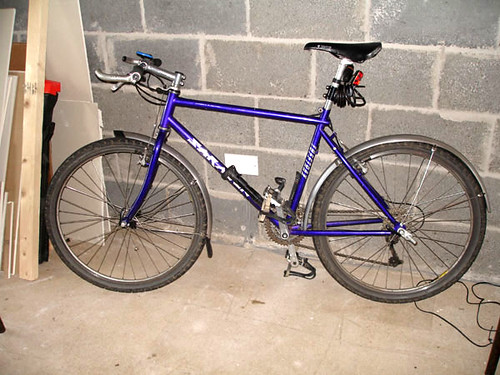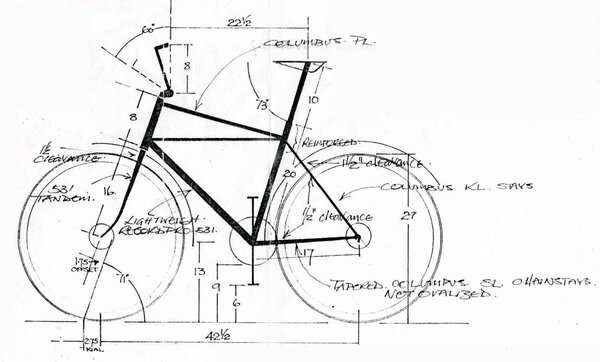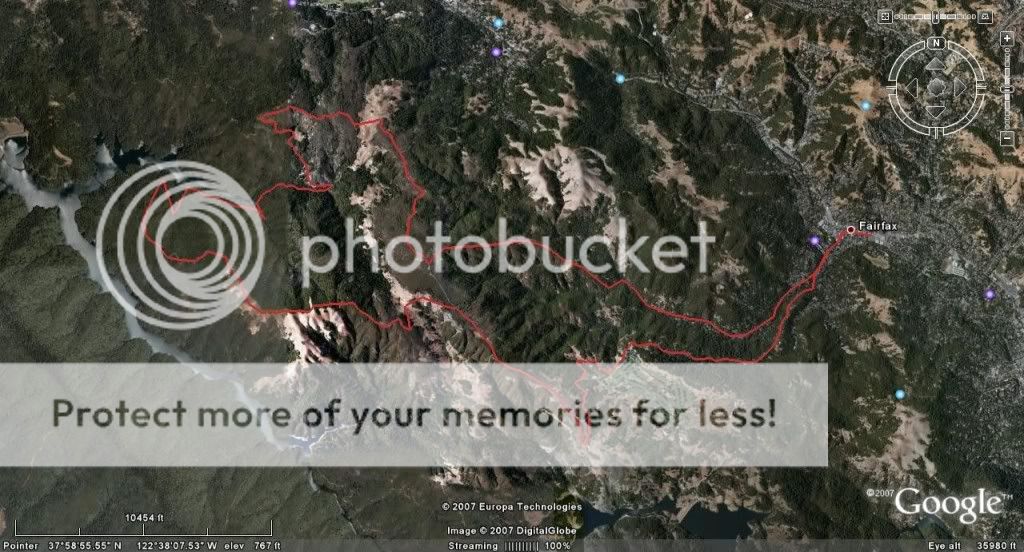- Feedback
- View
..the sound of sloshing wellies...
....the sound of sloshing wellies... The solution to this is to drill a hole, somewhere between the toes.
I'am disappointed that Geoff can't always digitally shift without stopping. The idea of stopping riding, when the going gets easy, in order to shift to a higher range of gears is familiar. It sounds like the reverse of the Rough Stuff Fellowship philosophy of getting off when the going gets difficult.
Anyway, the idea of off-road pioneers with greasy fingers and water-filled wellies sounds rather heroic to me.
:idea: !Eureka! A hook attached to the wellies, through an oversize, and leaky hole, could solve both shifting and sloshing problems. :idea:
Biopace chainsets... (I think I have one, still in the box, somewhere).
They weren’t elliptical, more parallelogram with rounded corners.
In terms of reducing the dead spot and smoothing the transfer of power, they didn't make sense. I believe that it was just Shimano's way of getting a patent out of an old Victorian idea.
....the sound of sloshing wellies... The solution to this is to drill a hole, somewhere between the toes.
I'am disappointed that Geoff can't always digitally shift without stopping. The idea of stopping riding, when the going gets easy, in order to shift to a higher range of gears is familiar. It sounds like the reverse of the Rough Stuff Fellowship philosophy of getting off when the going gets difficult.
Anyway, the idea of off-road pioneers with greasy fingers and water-filled wellies sounds rather heroic to me.
:idea: !Eureka! A hook attached to the wellies, through an oversize, and leaky hole, could solve both shifting and sloshing problems. :idea:
Biopace chainsets... (I think I have one, still in the box, somewhere).
They weren’t elliptical, more parallelogram with rounded corners.
In terms of reducing the dead spot and smoothing the transfer of power, they didn't make sense. I believe that it was just Shimano's way of getting a patent out of an old Victorian idea.



